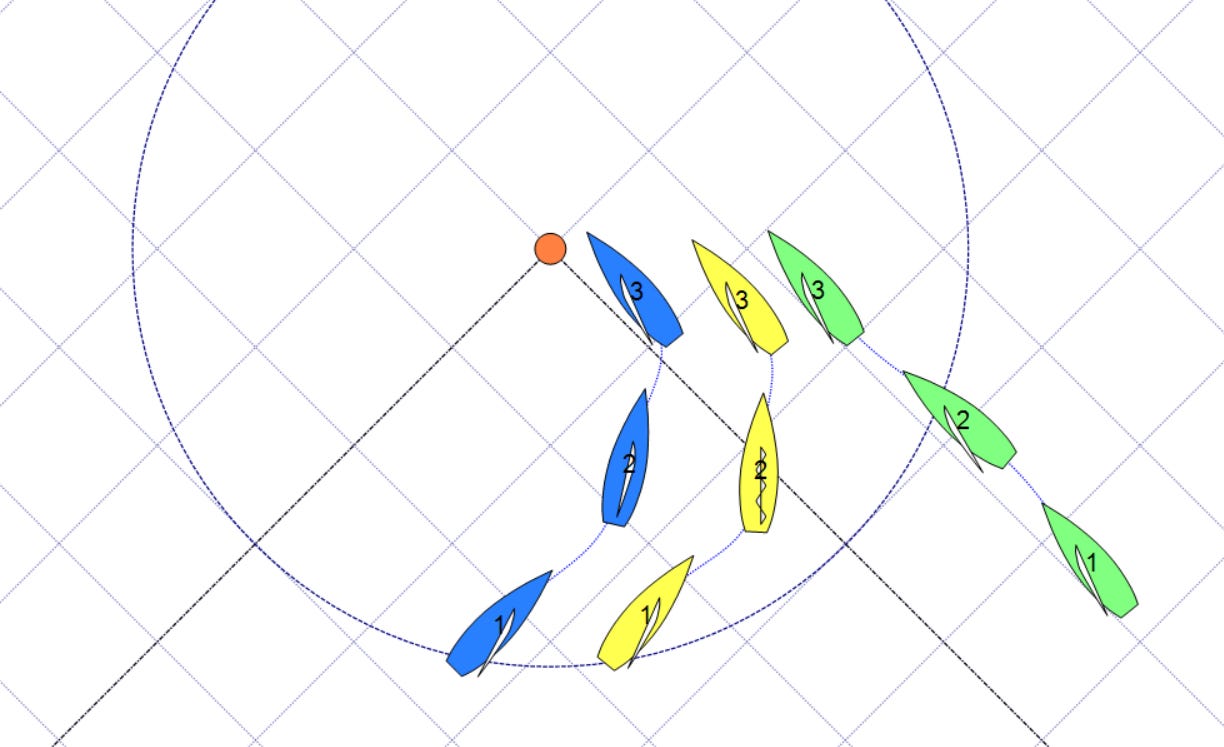Everything You Need To Know About the 2025-2028 Racing Rules (pt 1)
If you're going to read any article in this series, make it this one.
Welcome to the relaunch of The Layline. This is going to be a lot like my old newsletter, just on Substack.
The goal of these posts is to give you one (or more) actionable tips to make you a better sailor every week.
With the start of a new Olympic cycle, World Sailing has rolled out a new set of rules, with some changes that will have real impacts on the race course.
In this series of posts, I want to break down some of the most important changes, to make sure you’re prepared for your first regatta in 2025.
To get you up to speed quickly, this first post is going to cover all of the changes which you actually need to know on the race course.
Avoiding Contact
14 Avoiding Contact If reasonably possible, a boat shall
(a) avoid contact with another boat,
(b) not cause contact between boats, and
(c) not cause contact between a boat and an object that should be avoided.
However, a right-of-way boat, or one sailing within the room or mark-room to which she is entitled, need not act to avoid contact until it is clear that the other boat is not keeping clear or giving room or mark-room.
This rule just got a lot stricter. Not only do you need to avoid hitting other boats, but you also can't cause contact between other boats or between a boat and objects like committee boats.
In practical terms, there are going to be a few areas where this will make you think twice:
The start line - you will need to be conscious of luffing boats above you
Laylines - think tacking onto the top mark layline
Bottom mark roundings - this is one I’m particularly concerned about - imagine a situation where multiple boats are rounding a bottom mark. All it takes is one boat making a mistake, and there could be multiple contacts behind them.
In my opinion, this rule is going to create a lot of new situations to protest someone where you wouldn’t have in the past.
Mark Room
The section of the rules which changes the most is Rule 18, or Mark Room.
18.2 Giving Mark-Room
(a) When the first of two boats reaches the zone,
(1) if the boats are overlapped, the outside boat at that moment shall give the inside boat mark-room;
(2) if the boats are not overlapped, the boat that has not reached the zone at that moment shall give the other boat mark-room.
When a boat is required to give mark-room by this rule, she shall continue to do so for as long as this rule applies, even if later an overlap is broken or a new overlap begins.
Rule 18.2 has been restructured to be more intuitive. The emphasis for this rule is now placed on when the first boat reaches the zone, rather than the overlap.
On the race course, you’re going to want to become very in sync with how big the zone is for your class. If you’re in a tight situation, try to remember exactly where you were at the point you enter the zone.
Actionable tip: Practice measuring ‘the zone’ on dry land. When you’re rigging up, try visualising how big 3 hull lengths is by comparing the distance to other boats around you.
Rule 18.3 Tacking in the Zone If a boat passes head to wind from port to starboard tack in the zone of a mark to be left to port, rule 18.2 does not apply between her and another boat on starboard tack that is fetching the mark. If the other boat has been on starboard tack since entering the zone, the boat that passed head to wind
(a) shall not cause the other boat to sail above close-hauled to avoid contact, and
(b) shall give mark-room if the other boat becomes overlapped inside her.
In the old rules, if two boats tacked inside the zone, the outside boat had to give the inside boat mark room. Now they don’t.
What does this mean in practical terms? As a boat who tacks inside the zone, if another boat also tacks inside the zone, you aren’t entitled to mark room. You will only have your rights under rule 11 and 12.
This gives more protection to the boat that is on starboard tack, so if you’re tacking late at the top mark, you’re going to want to be extra cautious.
Close Covering Tacks
Rule 17 On the same tack; Proper Course If a boat clear astern becomes overlapped within two of her hull lengths to leeward of a boat on the same tack, she shall not sail above her proper course while they remain on the same tack and overlapped within that distance, unless in doing so she promptly sails astern of the other boat.
This rule does not apply if the overlap begins while the windward boat is required by rule 13 to keep clear
In normal language, if a boat tacks closely above you, you now have to maintain sailing close hauled, and can’t luff that boat. This is going to limit your options for protecting your clear air in late stages of a regatta.
Although there are a heap of other changes, these are the changes which I think will have the most impact to your racing.
If you’re kind enough to share your sailing knowledge with friends or competition (I don’t blame you if you’re not), send them this article above all else. Use this button below.
Stay tuned for next week, where I’ll be breaking down the rest of the changes.







